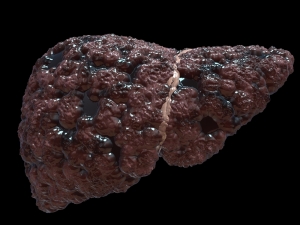There is now a new treatment of cystic fibrosis that the FDA has approved for cystic fibrosis, Kalydeco (thanks to en.wikipedia.org for this link).
It is one pill that is taken twice per day. It seems to be well tolerated, but is expensive. It targets a defective protein that is the cause of cystic fibrosis.
Another very beneficial home remedy is the inhalation of salt water twice per day for 15 minutes as I have summarized in this blog.
Otherwise treatment is directed at the symptoms of the acute clinical situation first, but also at the overall CF condition in general. When pneumonia is present, this is treated with the appropriate antibiotics and with chest physiotherapy. However, all of the other factors have to be treated also, such as the dietary insufficiency knowing that a certain degree of malabsorption has to be taken into account and certain dietary supplements such as vitamins (particularly D and E) may be required.
This is why many centers offer a comprehensive multidisciplinary team approach to the treatment of cystic fibrosis (CF). In the following table the various organ systems affected by CF that have been mentioned at the beginning of this overview (entitled “Organ changes in Cystic Fibrosis”) has been repeated.
This time, however, the treatment options are listed beside it.
Treatment of Cystic fibrosis
| Organ system affected: | Description of therapy: |
| lung tissue | medical treatment with antibiotics for pneumonia or flareup of chronic bronchitis or bronchiectasis; lung surgery for specific problems |
| pancreas | 1. digestive enzymes and other supplementations 2. 10% of CF patients with diabetes mellitus need insulin therapy |
| 98% infertility in males | urologist to do investigation, if needed; often counselling required regarding acceptance |
| decreased fertility rate in women | gynecologist may need to be consulted |
| liver tissue | end stage liver cirrhosis may require liver transplant |
| protruding veins in the lower esophagus that lead to vomiting of blood | esophageal varices as a result of “portal hypertension” from liver cirrhosis may require an emergency endoscopic sclerotherapy |
| pulmonary hypertension | initially needs therapy with diuretic therapy; later on needs careful monitoring by cardiologist and a medical team; end stage disease may require heart and double lung transplant |
| salt depletion | loss of salt needs to be replaced with supplements in diet |
| nasal polyps | nasal polyps and nasal infections need ENT specialist attention; chronic recurrent sinus problems may require surgical drainage procedure by ENT specialist |
| gall stones | gall stones may require surgery (cholecystectomy) |
References:
1. Noble: Textbook of Primary Care Medicine, 3rd ed., Copyright © 2001 Mosby, Inc.
2. National Asthma Education and Prevention Program. Expert Panel Report II. National Heart, Lung and Blood Institute, 1997.
3. Rakel: Conn’s Current Therapy 2002, 54th ed., Copyright © 2002 W. B. Saunders Company
4. Murray & Nadel: Textbook of Respiratory Medicine, 3rd ed., Copyright © 2000 W. B. Saunders Company
5. Behrman: Nelson Textbook of Pediatrics, 16th ed., Copyright © 2000 W. B. Saunders Company
6. Merck Manual: Cystic fibrosis (thanks to www.merckmanuals.com for this link)
7. Goldman: Cecil Textbook of Medicine, 21st ed., Copyright © 2000 W. B. Saunders Company
8. Ferri: Ferri’s Clinical Advisor: Instant Diagnosis and Treatment, 2004 ed., Copyright © 2004 Mosby, Inc.
9. Rakel: Conn’s Current Therapy 2004, 56th ed., Copyright © 2004 Elsevier
10. Suzanne Somers: “Breakthrough” Eight Steps to Wellness– Life-altering Secrets from Today’s Cutting-edge Doctors”, Crown Publishers, 2008







